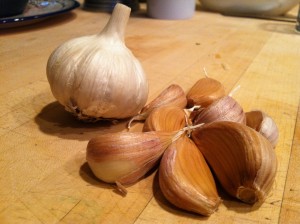 Garlic, I always assumed, was just garlic. That was before I started reading about heirloom varieties with exotic names like Persian Star, Chilean Silver, Georgian Fire, and Creole Red. Robust and zingy, they promised to deliver more flavor than the common supermarket varieties that are stocked not because they’re the most delicious, but—surprise!—because they can last the longest on supermarket shelves.
Garlic, I always assumed, was just garlic. That was before I started reading about heirloom varieties with exotic names like Persian Star, Chilean Silver, Georgian Fire, and Creole Red. Robust and zingy, they promised to deliver more flavor than the common supermarket varieties that are stocked not because they’re the most delicious, but—surprise!—because they can last the longest on supermarket shelves.
So of course, I had to try growing my own, especially after I learned that garlic is a low-maintenance crop that I could plant in my empty window boxes during the winter. “Plant on Columbus Day, harvest on the Fourth of July,” said my friend Robyn, who runs a small farm.
But which variety should I choose? I already knew from reading Organic Gardening that I didn’t want a standard grocery store variety. It’s not just a question of the pungency. “Garlic sold in grocery stores is often imported from China and treated with a chemical to prevent sprouting,” the magazine warned.
My choice fell on Spanish Roja. According to Marie Iannotti’s wonderful book, The Beginner’s Guide to Growing Heirloom Vegetables, “Spanish Roja is a garlic lover’s delight; the strong garlic aroma enhances and intensifies its flavor,” which she describes as “a fiery, warm spice. This garlic might ‘burn’ your tongue when eaten raw, but it can be used to add a zesty bite to dishes.”
I planted the cloves right after the hurricane in late October, expecting to see the first scapes appear in spring. But a month later, there was a little shoot poking up out of the soil. Then another. And another. Whoops. Scapes aren’t supposed to appear until the warm weather—and then you’re supposed to cut them back so that the plant’s energy goes into the bulb, not the greens. I immediately messaged Robyn. “No worries—you’re fine,” she messaged back. “Those aren’t scapes, those are the first garlic shoots, and they will stop growing once the weather gets really cold, and then pick up again in spring. So, don’t cut ‘em!”
OK, so the temperature is in the 20s now. Yet the shoots are continuing to grow. How cold does it have to be?
